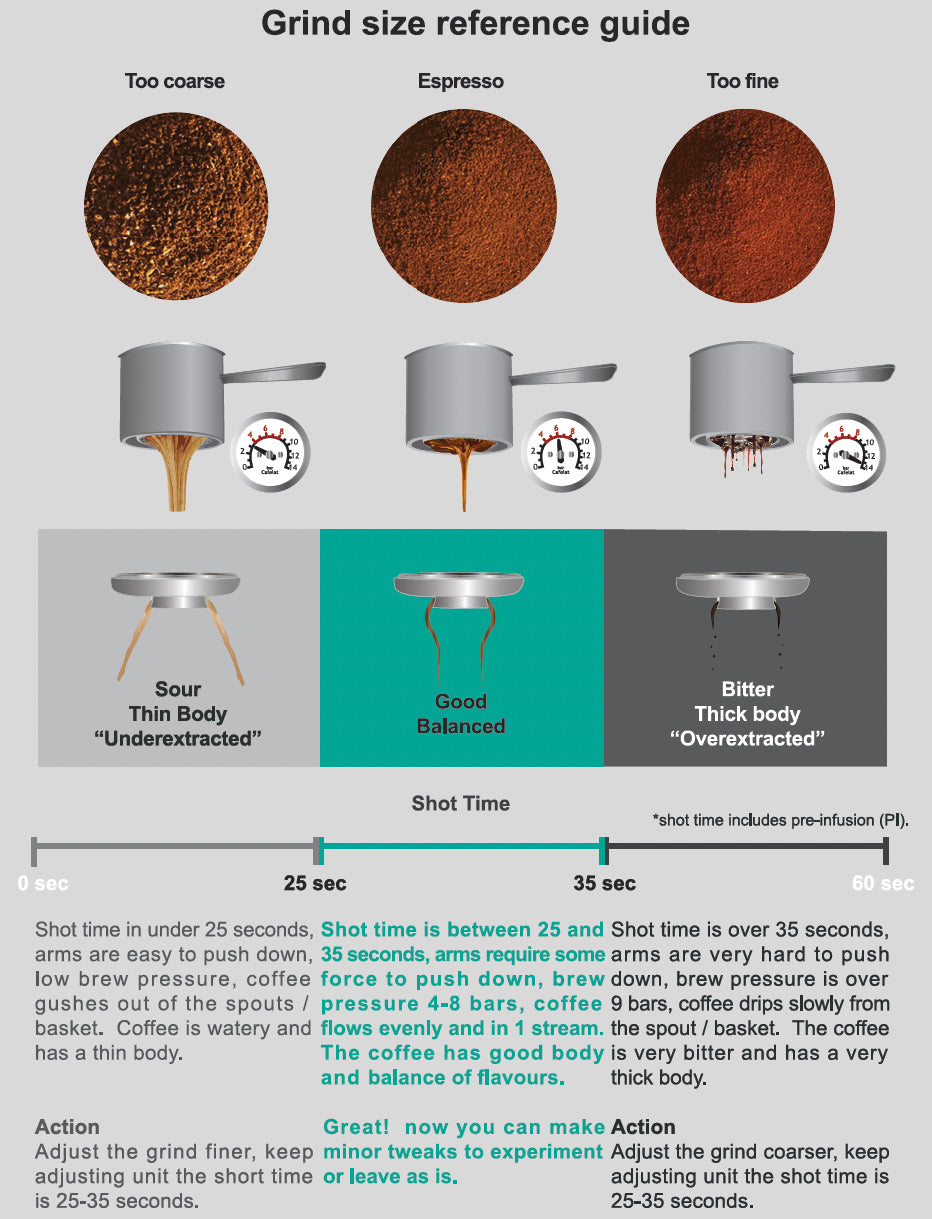How to Time Espresso Extraction
Taking Your Espresso to the Next Level: Why Timing Matters
Understanding the Importance of Timing in Espresso Brewing
For any home barista aiming to craft the perfect cup, mastering the timing of espresso extraction is a crucial step toward making exceptional coffee. The balance of timing, grind size, and flow rate can seem overwhelming at first, but once these fundamentals are understood, the process becomes both enjoyable and rewarding. Perfecting the timing turns espresso brewing into an art form, where every second influences the result.
Why Timing is Essential in Espresso Extraction
Timing is key to controlling the flavor and texture of your espresso. The extraction time determines how much flavor is drawn from the coffee grounds. If extraction happens too quickly, you’ll end up with an under-extracted shot that tastes sharp, sour, and lacks complexity. On the other hand, a prolonged extraction leads to over-extraction, leaving your espresso bitter and unpleasant. Finding the perfect timing is critical to achieving a balanced and flavorful shot.

Achieving the Ideal Espresso Extraction Time
The Perfect Window for Espresso Extraction
The sweet spot for espresso extraction typically ranges from 25 to 35 seconds. Based on my experience, aiming for around 30 seconds usually provides the best results. If your shot finishes in less than 25 seconds, it’s likely under-extracted, resulting in sour and weak flavors. If it takes longer than 35 seconds, you risk over-extraction, leading to bitterness and an unpleasant aftertaste.
For coffee lovers exploring premium machines, the Philips LatteGo 5400 stands out for its intuitive design and ability to maintain consistent timing, helping you perfect your shots effortlessly.
Fine-Tuning Your Espresso with Grind Adjustments
Using Grind Size to Control Extraction Time
One of the key variables in controlling espresso extraction timing is grind size. A finer grind slows the extraction process, while a coarser grind speeds it up. If your shot pulls too quickly (under 25 seconds), your grind is likely too coarse. Conversely, if it takes longer than 35 seconds, your grind may be too fine. Finding the right grind size requires trial and error, but once you achieve the correct balance, the flavor improvement will be significant.
For those working with versatile machines like the Philips 3200 LatteGo, the built-in grinder offers an easy way to adjust grind size and maintain precision.
Balancing Timing and Taste
Letting Taste Guide Your Espresso Extraction
While timing plays an essential role in pulling a great shot, taste is the ultimate measure of success. A well-extracted espresso offers a balance of sweetness, acidity, and body. If your shot tastes sour or lacks depth, it’s likely under-extracted, signaling that you need a finer grind or an adjustment to your brew ratio. If the flavor is bitter or dry, it’s probably over-extracted, meaning you should use a coarser grind or shorten the extraction time.
For users of machines like the DeLonghi Magnifica Evo, which are known for their precise brewing systems, fine-tuning these factors becomes seamless.
Troubleshooting Espresso Extraction Issues
Common Problems and Solutions
Under-Extraction: If your shot pulls in less than 25 seconds and tastes sour or flat, your grind is too coarse. Adjusting to a finer grind can help slow down the extraction and balance the flavors.
Over-Extraction: If your shot takes longer than 35 seconds and tastes bitter or overly strong, your grind is likely too fine. Switching to a coarser grind should improve the timing and flavor balance.
For espresso enthusiasts who want additional guidance, the Philips 4300 LatteGo offers customizable settings to address these challenges with ease.
Enhancing Your Espresso with Pre-Infusion
The Role of Pre-Infusion in Espresso Timing
Pre-infusion, where low-pressure water is applied to the coffee grounds before full extraction begins, can have a big impact on the flavor of your espresso. Some machines offer automatic pre-infusion, but if yours doesn’t, you can manually replicate the effect by briefly pausing the pump. Incorporating pre-infusion into your overall extraction timing helps improve consistency and texture, resulting in a more well-rounded shot.
Experimenting with Brew Ratios for Flavor Optimization
Adjusting Brew Ratios to Enhance Flavor
Another critical factor in espresso extraction is the brew ratio—the relationship between the amount of coffee grounds and the liquid espresso produced. A typical starting point is a 1:2 ratio, where 18 grams of coffee yields 36 grams of espresso. However, experimenting with different ratios can unlock unique flavors depending on the beans you’re using.
For example, lighter roasts may benefit from a longer extraction time or a higher ratio, such as 1:2.5, which enhances fruity and acidic notes. Darker roasts often perform best with a standard 1:2 ratio, preserving their rich, robust flavors while minimizing bitterness.
If you're using a machine like the DeLonghi Magnifica S, its consistent brewing capabilities make it easy to experiment with different ratios and achieve your ideal flavor.

Sensory Feedback: The Final Piece to Espresso Mastery
Developing Your Skills Through Taste and Observation
While timing and brew ratios are essential, using sensory feedback to refine your espresso is equally important. The perfect extraction time doesn’t always guarantee a perfect shot, so tasting the espresso allows you to adjust variables like grind size and brew ratio for the best flavor. By continually tasting and tweaking your process, you’ll gain the intuition and skill needed to consistently produce excellent espresso.
The Journey to Mastering Espresso
A Path of Precision and Practice
Mastering espresso extraction timing is a journey that requires patience, practice, and attention to detail. By focusing on timing, adjusting your grind size, and relying on taste, you’ll soon be able to pull shots that rival those from your favorite cafés. Espresso making is both an art and a science, and the more you experiment, the more rewarding your coffee experience will become.
